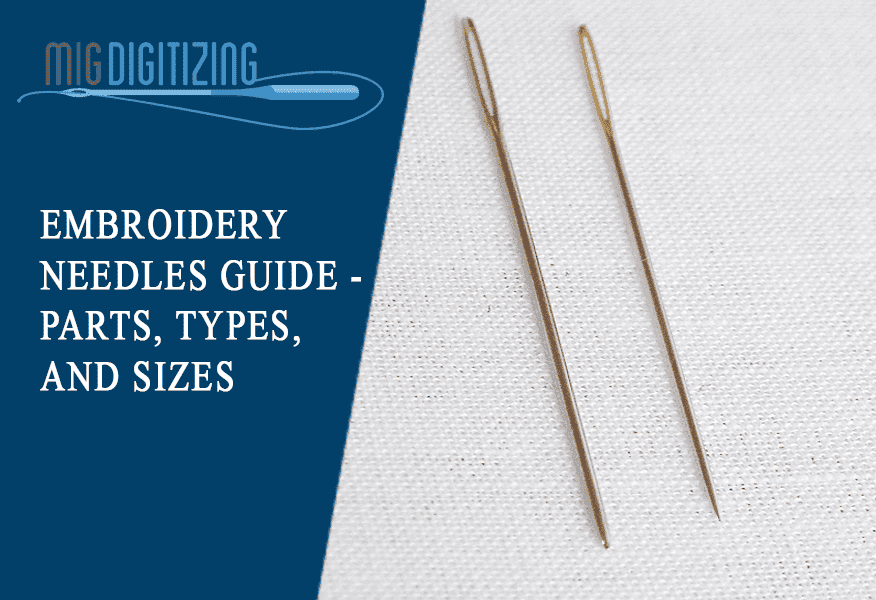
If you ever see a long, hollow, slender and small tool that is sharp from one end, you are looking at a needle. Needles are everywhere and whether you know or not you have it in your home, too. We cannot remove it from our lives, as it is deeply rooted in our routine. But how?
The dress we wear every day is because of the needle that helped in sewing the parts of the clothes. We can’t ignore the fact about the role it plays in our lives. In the olden days, the needles were made of wood or bones; now, the needles are made from carbon steel, or are gold plated or made from nickel. If you talk about high-quality embroidery needles, then such needles are made from platinum and titanium alloy.
In this article, we will talk about the embroidery needle types, parts, and sizes.
Talking about the modern era, technology has taken its place all over the world. Embroidery digitizing companies today paint a new picture of needlework and embroidery designs. They provide services like transforming the pre-existing design into embroidery. Such companies make use of the software that commands the machine to work in a specified pattern to stitch out a particular design.
Many digitizing companies keep in check of the needle’s sizes and parts. If you are not aware; then keep reading, you will know.
Embroidery Needle Parts
The common parts of an embroidery needle are shank, shaft, eye, point, groove, point, and scarf.
Shank
Shank is a vital part of the needle. It is that part that we insert into the embroidery machine and is the heaviest part.
Shaft
A shaft is the narrow part of the embroidery needle that holds together the functional parts.
Eye
An eye of the needle is basically a hole that you see on top of it. Through that hole, your thread passes down.
Point
Point is the part that is on the opposite side of the eye in the needle. It can be pointy, sharp, or like a ball or anything depending upon the function.
Groove
Groove protects the thread from joining it with the bobbin. It does so by hiding the thread when it passes through the fabric.
Scarf
It is the cutaway portion on the needle back and is located above the needle eye. The scarf position and shape increases the consistency of the embroidery stitches. It helps the hook mechanism by rotating the needle to engage the thread loop.
These are the common parts of the embroidery needle that digitizing companies have to take care of to give their clients the type of perfection that they wish to have in the embroidery designs. We are one of those embroidery digitizing companies who take pride to have the slogan “the best of all”.
Embroidery Needles Types
Apart from its shape and size, the embroidery needle comes in various types. Each type has its own purpose and speciality. The most common needle types in embroidery needle include:
-
Universal needles
-
Sharp needles
-
Ballpoint needles
-
Stretch needles
-
Curved needles
-
Top-stitch needles
Embroidery Needle Sizes
The embroidery needle sizes are measured by two different systems - American and European Systems. The needle sizes in American system goes from 8 to 19 and the European system is in between 60 to 120. The sizes are usually listed in both the measurement systems. The real art is to choose the right stitch type and directions to make the design look perfect.
Bottom Line
Needle plays an influential role in the embroidery artwork. Without it, it is nigh possible to make the designs and patterns we see in on fabric and other material. The artwork ranges from flags, logos, decoration pieces, badges, and much more.
Alongside that, many people often ask about whether or we can use different colours in the embroidery artwork. The answer is, you can use as many colours as you like. You can take the help of a reliable digitizing company like us. Give a picture of the design and after discussing the formalities related to the required needs, we will start working for you. Get your free estimate today!



